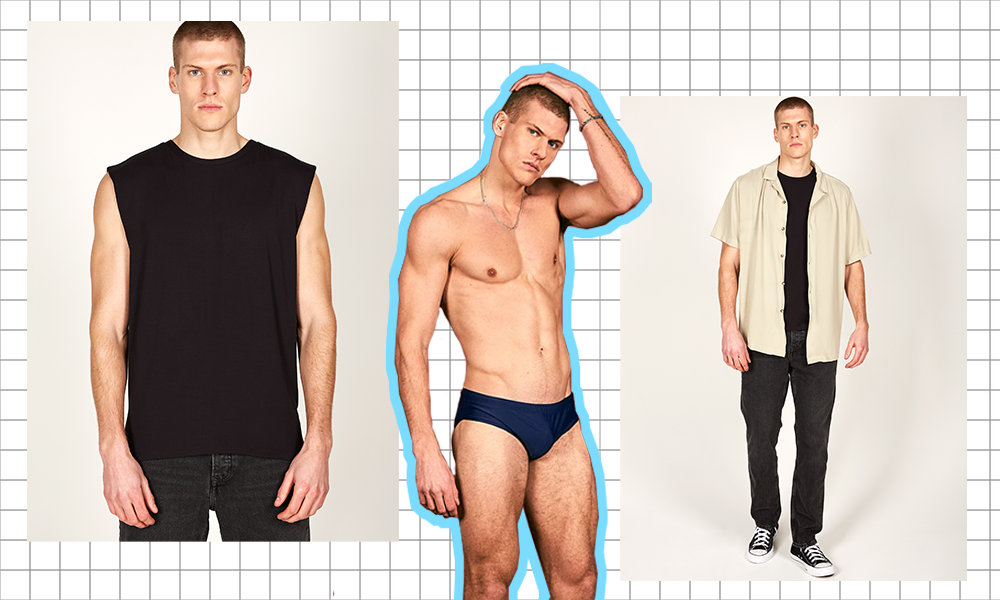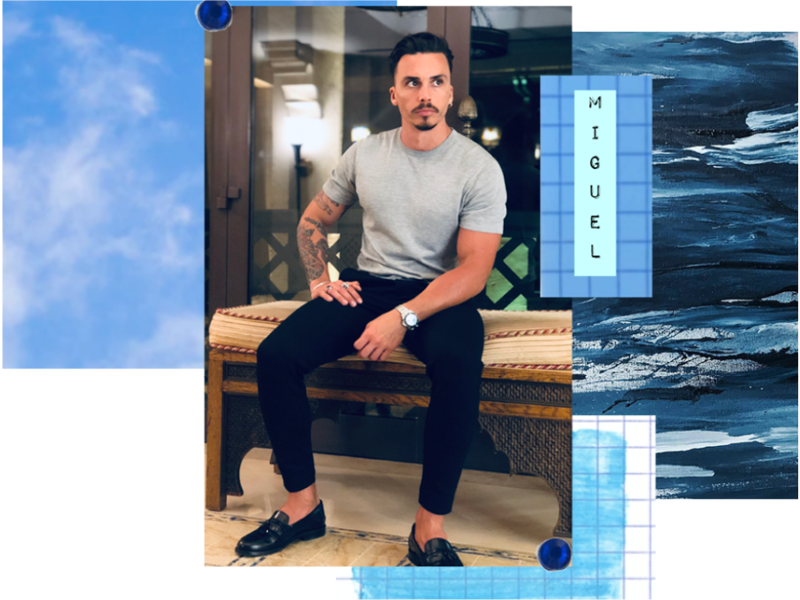Miguel Munoz wants to clean up the ocean with clothes. In response to the huge amount of plastic being dumped into the ocean, Munoz has just launched Kromo Menswear, a sustainable menswear brand with a mission.
Why did you start Kromo?
I’ve always had an interest in sustainability and fashion. I also always wanted to start my own business but I never had the time to do it. The pandemic gave me the time to sit down and put all my ideas together and create the brand.
What did you do before this?
My background is in hotels and I was doing some marketing as well.
I wanted my clothes to be sustainable, so I just started making my own
When did you set up Kromo and was that process like?
I started the business in May last year. It was pretty straightforward. I just put my business plan together and applied for a start-up loan. From there, I started sourcing for manufacturers and fabrics. Then I put the website together and found people to help with the PR.
How did you come up with the idea?
I was kind of selfish and thought about myself. I want my clothes to be sustainable, so I thought “What if I just make my own clothes?” And then, what if I make it into a brand? I like to wear things that are very comfortable. I wear the same things: I have one pair of shorts that I really like and a couple of T-shirts. I wanted to make it very minimalistic and durable. I also wanted the clothes to be the kind you can wear for any occasion.
I always wanted to do swimwear because I went to Brazil and I fell in love with the people there. They’re really in tune with nature and they love sustainability.

What’s the story behind the name and logo?
I kept visualising it in my head: something beginning with a K and something that was strong and grounded. The logo is a triangular eye and it means awareness, so for me, it means awareness about climate change and sustainability in fashion.
Why did you decide to do only menswear?
Because I was just thinking about myself. I get a lot of people asking if I’m going to do women’s wear or even clothing for babies. It’s not set in stone that we will only do menswear. We’ll see.
Can you talk me through the manufacturing process?
We use two types of fabrics. For our T-shirts and vests, we use bamboo lyocell, which is 96% bamboo and 4% elastane. We use ECONYL® for the shorts and the swimwear, which is made of old and abandoned fishnets extracted from the oceans and other recycled materials like carpets.
For the lyocell, they take the bamboo and dissolve it in a chemical called methyl morpholine oxide. They always reuse the water and the solvents that they use in future manufacturing processes. It’s a circular process, it’s never released into the environment. Then it’s put through a pump, a filter and a spinner. This thin, silky fibre comes out which is then woven into yarn and made into a fabric. It’s super soft and very durable.
We source our fabrics from Germany and Italy and all the clothes are made in London.
The government should ask big brands to make a certain percentage of their clothes in a sustainable way
Why is it important to you that your clothes are sustainable?
There are so many issues with fast fashion at the moment. There was that factory that collapsed in Bangladesh and all those people died. It was like 3000 workers. They were so mistreated. Meanwhile, H&M, Zara and all those big brands just keep making money. They don’t care about the process that comes before that. Things like that made me want it to be sustainable.
Do you think other fashion brands should be doing more in terms of sustainability?
Absolutely. I think the government should impose a tax or ask big brands to make a certain percentage of their manufacturing in a sustainable way.
Can you tell me a bit more about the beach clean-up you teamed up with?
It’s with Surfers Against Sewage. They’re doing a one-million-mile clean-up where they want to clean a million miles of beaches in the UK by the end of the year. I partnered with them to donate one pound of every purchase to their cause and to the clean-ups. They also raise awareness of what the government is doing and have template letters if you want to reach out to your MP.
What is the aim of Kromo?
To make the new generations conscious about the issues with fast fashion, changing their buying behaviour and make them understand that a T-shirt you can buy at H&M is 15 pounds for a reason. You have to think of the whole process; it’s not just the end product. If you’re paying fifteen pounds for it, imagine how much the people who put it together are getting paid? I want to make the new generations understand that there’s a lot of issues to do with climate change within fast fashion, and that we need to change our behaviours in order to stop them.
What are your plans for Kromo in the future?
I want to have my own affiliate here in London and be able to make my clothes here. I also want to introduce a fully circular system where people can send their old clothes to us and then we make them into new clothing. I’m hoping to turn plastic waste into clothing as well. There’s a machine to do it, but it’s really expensive. I want to use other fabrics too. There’s this really cool fabric made out of pineapple called Pinatex. It’s like leather, so making jackets or accessories with that would be really cool.
At the moment I’m looking to do a couple of collaborations and work with boutiques. I’d like to have a pop-up store, maybe in Amsterdam, because they’re really into sustainability there.

